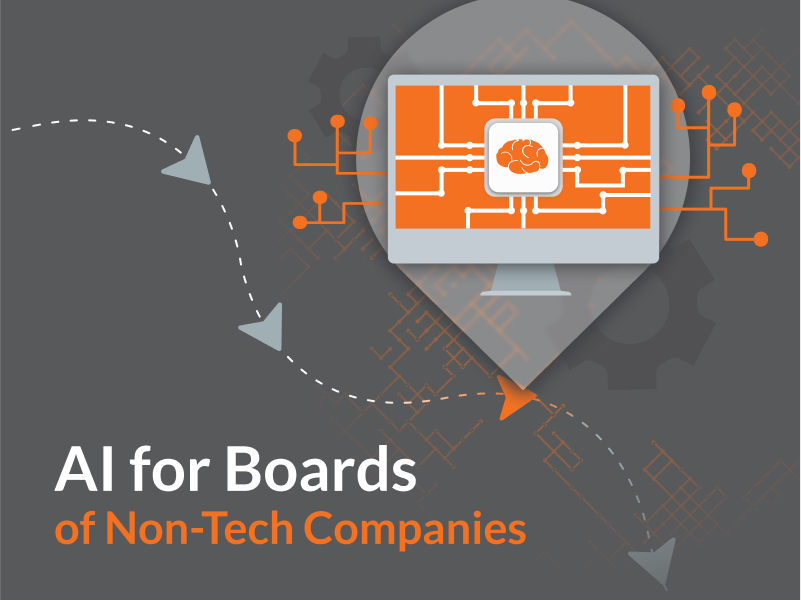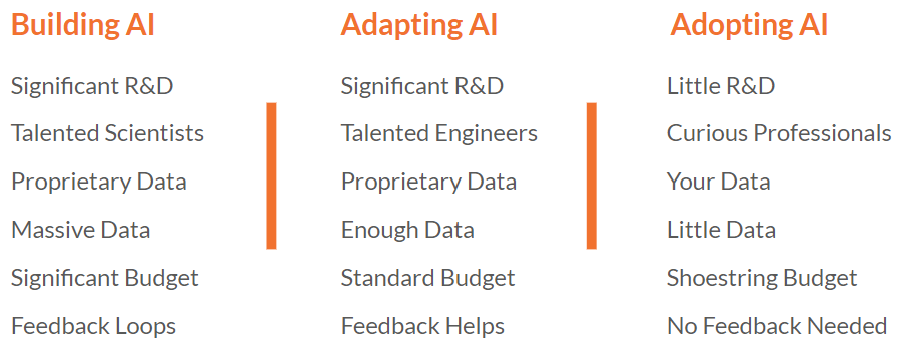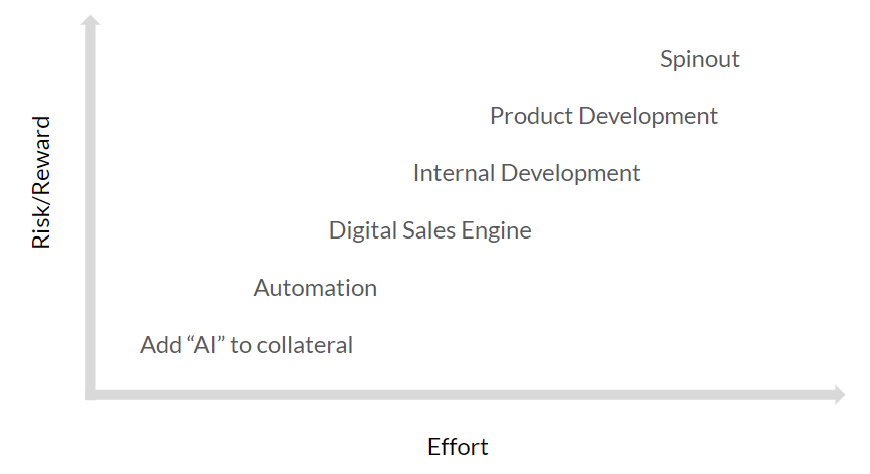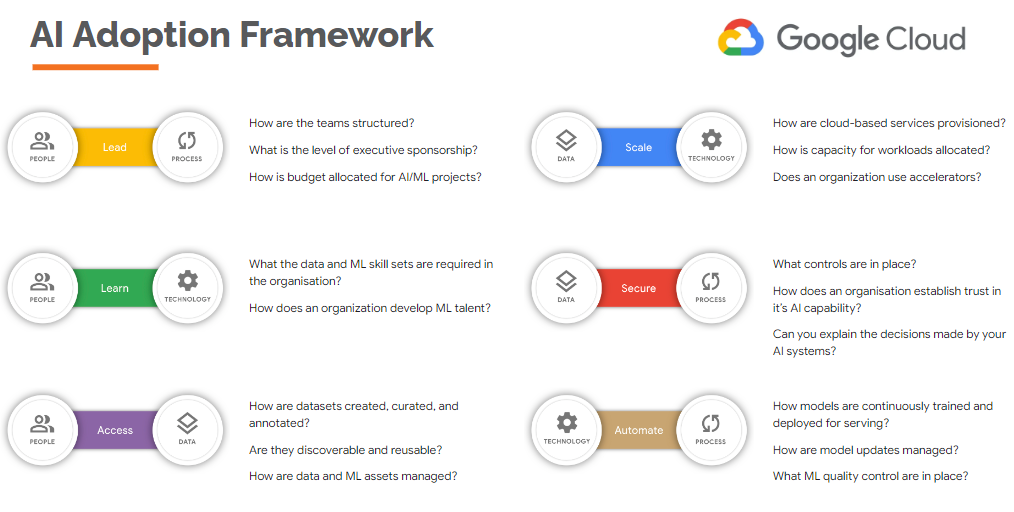
I’m asked regularly to share my thoughts on AI for a Board so I’ve developed a presentation that I use. Rather than keep this locked up in a private drive, I’m publishing the written version of what I present.
There are a few reasons behind this, it makes it easier to share my thoughts with more people, it helps me improve my thinking and it will be interesting to look back on to see whether I was in the ballpark of this fast evolving technology.
The audience for this particular article is primarily Boards and Executives at organisations that aren’t tech companies (not selling software or primary revenue is technology).
This distinction is important because tech companies have different considerations that I won’t cover in this article.
The key points I’ll cover are:
- What is AI?
- Why now?
- AI in Context
- Using AI
But first some of my experience with AI. Over 20+ years I’ve watched a few technology trends, many I’ve actively participated in at the forefront or close to. In AI, I built an award-winning startup in the last cycle that collaborated with Deakin University on research and counted companies like eBay and Nvidia as customers. I’ve made angel investments in machine learning companies and have a Machine Learning certification from Google.
I think about AI in a pragmatic, cross-discipline perspective as someone that can be in the weeds of algorithm engineering or at a distance allocating capital.
What is AI?
Most of the common definitions go along the lines of “artificial intelligence is technology that enables computers to simulate human intelligence and problem solving.”
But it’s more than that, AI goes beyond simulating human intelligence and in some instances it is far exceeding what we can achieve and the types of problems we can solve. It’s a different type of intelligence.
There are two broad categories of artificial intelligence:
- General AI: General AI is the more human-like intelligence dealing with general situations while learning from its surroundings, responding and evolving.
- Narrow AI: Narrow AI is “intelligence,” really algorithms, focused on solving specific problems.
Narrow AI is here and has been here for some time. Amazon’s recommendations, Netflix deciding what to show you, Google Maps directing you to your destination.
General AI still isn’t here yet. We can’t yet simulate a worm. But, we have developed AI that can generate language and, seemingly, reason about the world just like a human. You’re probably familiar with ChatGPT from OpenAI, Microsoft’s Copilot or Google’s Gemini that are giving us a big taste of General AI.
Why Does It Matter Now?
It’s these recent advancements, called Large Language Models, that have caught our imaginations and attention.
There are a few key factors contributing to AI’s surge in popularity (thanks Google Gemini):
- Increased computing power and access: Advancements in hardware like GPUs allow AI algorithms to process data faster. These advancements, combined with access to them, at scale, through the cloud makes it possible to process massive amounts of data much faster.
- Availability of data: The amount of data we generate and can access is exploding. From social media posts to sensor readings in factories, this data provides the raw material for AI systems to learn and improve.
- Breakthroughs in algorithms: Researchers are developing more sophisticated AI algorithms, particularly in machine learning, that can learn complex patterns from data and make increasingly accurate predictions.
- Real world results: AI has been implemented in a variety of situations now and proven its effectiveness. This success is driving further investment and confidence.
AI in Context
A Past, Comparable: the Spreadsheet
If we step out of the current moment and view AI in the context of history, AI is another technology that will advance humanity. We can look to the past to understand how it might play out.
A comparable is the release of the spreadsheet. The VisiCalc, launched on Apple, is an early example of a spreadsheet. It allowed companies to do the work that clerks were doing with computers significantly more efficiently. At the time people worried about spreadsheets taking their jobs. The clerks were replaced but they then took on jobs that required more brain power. AI is part of this same theme.

Over the long term, you can see with high confidence how AI has the potential to significantly change what is possible and how we work. Powerful technology, like the spreadsheet and personal computer, has the power to do this.
Where AI Fits For Most Organisations
Many organisations think they are building AI or that they need to build AI, but they don’t. Just like most organisations don’t need to build their own spreadsheet software or website content management system.
There are broadly three ways you can approach AI:
- Build AI: you can develop and operate new models. This requires significant resources of highly skilled machine learning experts, large data sets and access to large scale computing power.
- Adapt AI: you can take available models and adapt them to your unique circumstances. This requires software engineering expertise and enough data.
- Adopt AI: you can use off-the-shelf algorithms that are prebuilt and configured for your use case.

The approach you take can vary depending on the problem or opportunity you are looking at. Most organisations will Adopt AI, some will Adapt and a rare few will Build.
Adopting AI is best for situations where you are facing a common problem, faced by most other organisations. Adapting is best where you are faced with a unique problem that will give you a competitive advantage. Building is for those that want to serve a large market with the technology itself and there is no way to Adopt or Adapt to serve it.
How It Fits With Organisational Drivers of Cost, Revenue and Value
AI is, in many ways, just another type of technology that you can apply to different business problems. Each with different levels of effort and risk/reward trade-offs. It doesn’t matter which you choose, but it does matter that you choose consciously.

The easiest way to take advantage of AI is just to add it to your funding or sales collateral. I say that half jokingly but in reality it can work.
At the other end of the spectrum you may choose to build AI that you eventually spinout into a separate company and offer to your competitors and the industry more broadly.
Most likely, if you aren’t a technology organisation, your focus with AI is best spent using AI to automate, improve your sales process and improve customer relationships. This boils down to “save cost” and “grow revenue”, business fundamentals.
Using AI
After you’ve worked out where and why you might use AI, you will need to start working out how to make it happen.
As a Board, you will need to look at:
- AI Adoption Framework
- Hurdles to AI
- Risks
AI Adoption Framework
You will want to use a framework to help you organisation structure how it approaches AI.
Broadly speaking, you want one that covers people, change, finances, risks, security, use cases, operations and management.
There are a number of good enough frameworks available to help with this so selecting one and discussing it in detail is beyond the scope of this article as it is somewhat straightforward.
Here is an example AI Adoption Framework from Google Cloud:

Technical Hurdles to AI
There can be multiple hurdles to using AI that will have an impact on results. You need to understand these hurdles so that you can help remove them.
Hurdles to using AI are primarily around data and APIs (software interfaces). Despite the best business case, intentions and people, you can’t make AI produce commercial results if you don’t have the right foundations.
Data is often not suitable, stored in different places, inaccessible, too small or missing. Similarly, APIs are often not accessible, insecure or not in the right form.
If you have these obstacles then you will need to first invest in removing them before you can even consider AI. The good news is, AI can often help remove them faster than other solutions.
Risks
In considering the risks around AI, they are mostly no different to any other technology initiative.
But there are a few areas that need extra attention:
- Controls: you want to be sure that what you are using will protect your data in the way you need it protected (or not). With more advanced solutions, this is now largely being solved and part of the product you purchase.
- Accuracy: you want to be sure that the AI you use will be accurate enough. AI is powerful enough now to give you the sense that it will be correct but it isn’t always. You need to consider the error thresholds you will allow. While humans get it wrong AI is often held to a higher standard.
When thinking about risk just make sure you keep it in the context of rewards as well.
AI for Boards
You and your Board hopefully now have a reference point to help you make a start on taking advantage of AI in your organisation.